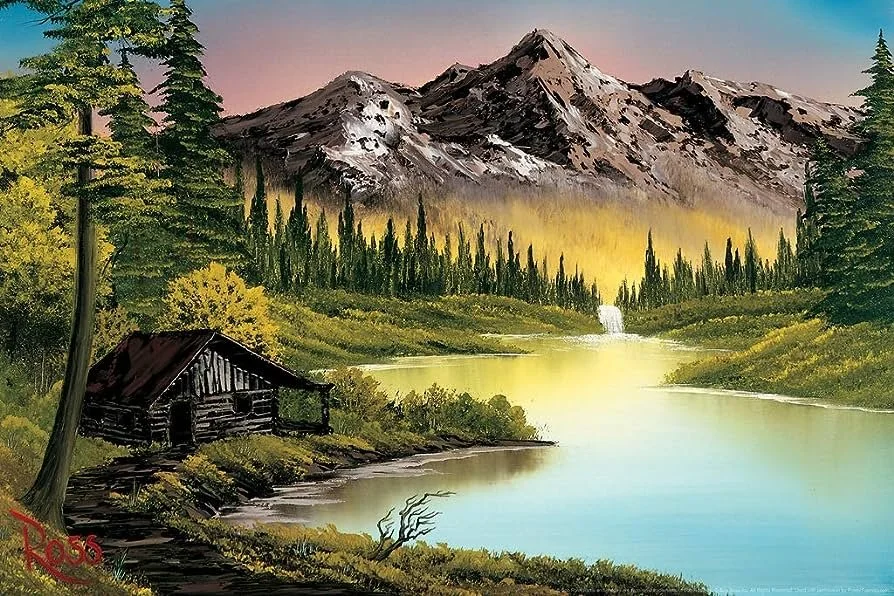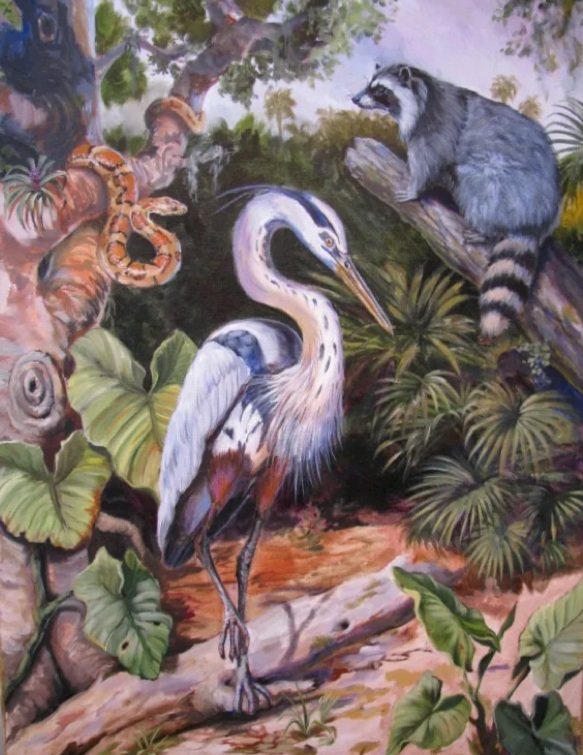Exploring Nature Through Art: Capturing the Beauty of the Outdoors in Paintings
Nature has always been a profound source of inspiration for artists. The tranquility of a forest, the majesty of mountains, the serenity of a calm lake, and the vibrant colors of a blooming meadow offer endless possibilities for artistic expression. Through the ages, artists have sought to capture the essence of the natural world in their work, creating masterpieces that not only depict the beauty of the outdoors but also evoke emotions and convey deeper meanings. This article explores the relationship between nature and art, examining how artists capture the beauty of the outdoors in their paintings and why this form of artistic expression continues to resonate with people today.
The Historical Context of Nature in Art
The depiction of nature in art dates back to ancient times. Early cave paintings, such as those found in Lascaux, France, show that prehistoric humans were already inspired by their natural surroundings. These early artists depicted animals, plants, and landscapes, laying the foundation for the long-standing tradition of nature in art.
During the Renaissance, nature played a significant role in art as well. Artists like Leonardo da Vinci and Albrecht Dürer meticulously studied and depicted the natural world, bringing a scientific precision to their work. The detailed representation of plants, animals, and landscapes in their paintings reflected the Renaissance ideal of harmonizing art and nature.
In the 19th century, the Romantic movement placed a strong emphasis on nature. Artists like Caspar David Friedrich and J.M.W. Turner created awe-inspiring landscapes that captured the sublime beauty and power of the natural world. These paintings often conveyed a sense of wonder and reverence for nature, reflecting the Romantic belief in the spiritual and emotional significance of the natural environment.
Techniques for Capturing Nature's Beauty
Capturing the beauty of nature in paintings requires a combination of technical skill and a deep appreciation for the subject. Artists employ various techniques to bring their visions to life on canvas.
Observation and Study
The first step in painting nature is observation. Artists spend time studying their surroundings, taking note of the details, colors, and light. This practice of careful observation helps artists to understand the nuances of the natural world and to translate them into their work.
Plein Air Painting
Plein air painting, or painting outdoors, is a technique that allows artists to capture the essence of a scene in real-time. This method has been popularized by artists like Claude Monet and the Impressionists, who sought to capture the changing light and atmosphere of a scene. Painting en plein air allows artists to immerse themselves in their environment, creating works that are vibrant and dynamic.
Use of Color
Color plays a crucial role in capturing the beauty of nature. Artists use color to convey the mood and atmosphere of a scene. For example, the use of warm colors like reds, oranges, and yellows can evoke the warmth and energy of a sunset, while cool colors like blues and greens can create a sense of calm and tranquility. Understanding the interplay of light and color is essential for creating realistic and evocative landscapes.
Texture and Brushwork
The texture and brushwork in a painting can also enhance the depiction of nature. Artists use different brushstrokes to create the illusion of texture, such as the rough bark of a tree or the soft petals of a flower. The use of texture can add depth and dimension to a painting, making it feel more lifelike and engaging.
Themes and Motifs in Nature Paintings
Nature paintings often explore a variety of themes and motifs, each offering a unique perspective on the natural world.
Seasons and Weather
The changing seasons and weather conditions are a common theme in nature paintings. Artists capture the vibrant colors of autumn, the serene beauty of a snowy landscape, the freshness of spring, and the warmth of summer. Each season offers its own unique palette and atmosphere, providing endless inspiration for artists.
Wildlife and Flora
The depiction of wildlife and flora is another prominent motif in nature paintings. Artists portray animals in their natural habitats, capturing their grace and beauty. The intricate details of plants and flowers are also a popular subject, showcasing the diversity and complexity of the natural world.
Landscapes and Vistas
Landscapes and vistas are perhaps the most iconic subjects of nature paintings. From majestic mountain ranges to serene coastal scenes, landscapes offer a broad canvas for artistic expression. Artists capture the grandeur and scale of these scenes, often infusing them with a sense of awe and wonder.
The Human Connection
Many nature paintings also explore the human connection to the natural world. These works often depict people interacting with nature, whether through farming, fishing, hiking, or simply enjoying the outdoors. This theme highlights the relationship between humans and their environment, emphasizing the importance of nature in our lives.
The Emotional and Spiritual Impact of Nature Paintings
Nature paintings have a profound emotional and spiritual impact on viewers. They evoke a sense of peace and tranquility, offering a respite from the chaos of modern life. The beauty of nature captured in these works can inspire feelings of awe, wonder, and reverence.
Emotional Resonance
The emotional resonance of nature paintings lies in their ability to capture the essence of a moment. The play of light, the colors of the sky, the texture of the landscape—all these elements work together to create a powerful emotional experience. Viewers may find themselves transported to a different time and place, feeling the serenity of a quiet forest or the exhilaration of a stormy sea.
Spiritual Connection
For many, nature paintings also have a spiritual dimension. They remind us of the beauty and majesty of the natural world, encouraging a sense of gratitude and reverence. This spiritual connection to nature can be deeply moving, fostering a sense of harmony and balance.
The Modern Relevance of Nature Paintings
In today's fast-paced and technology-driven world, nature paintings continue to hold significant relevance. They serve as a reminder of the beauty and importance of the natural world, encouraging viewers to appreciate and protect their environment.
Environmental Awareness
Nature paintings can raise awareness about environmental issues. By highlighting the beauty of nature, artists can inspire a sense of stewardship and responsibility. These works can serve as a call to action, encouraging viewers to engage in conservation efforts and to appreciate the fragile beauty of the natural world.
Escapism and Mindfulness
Nature paintings also offer a form of escapism and mindfulness. In a world filled with distractions and stress, these works provide a moment of calm and reflection. They invite viewers to slow down, to appreciate the beauty around them, and to find peace in the simple wonders of nature.
Exploring nature through art is a timeless and profound endeavor. Through careful observation, technical skill, and a deep appreciation for the natural world, artists capture the beauty and essence of the outdoors in their paintings. These works not only depict the physical beauty of nature but also evoke powerful emotions and spiritual connections. In a modern world that often feels disconnected from nature, these paintings serve as a vital reminder of the importance and majesty of the natural world. Whether through the changing seasons, the diversity of wildlife, or the grandeur of landscapes, nature paintings continue to inspire, uplift, and resonate with people across generations.





